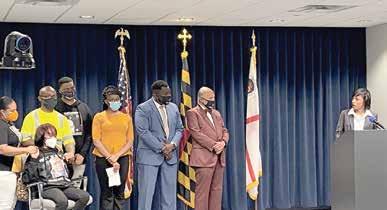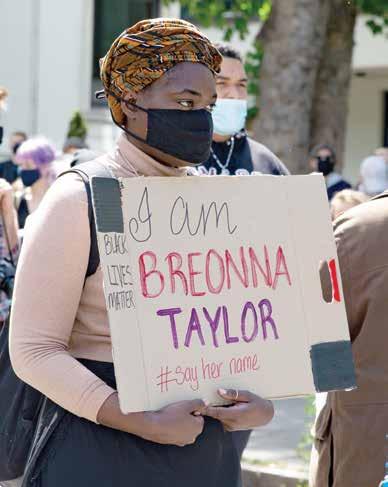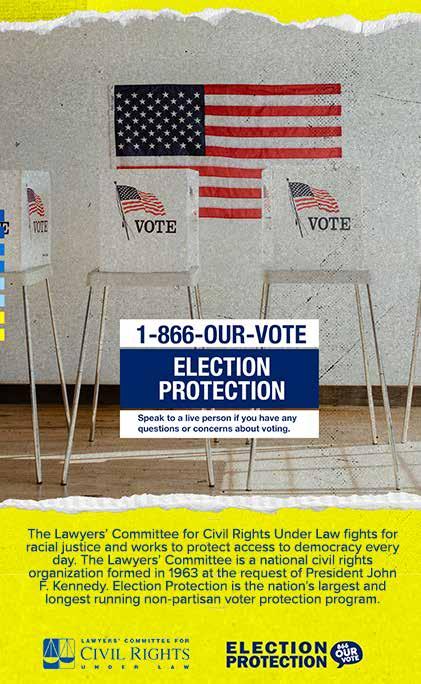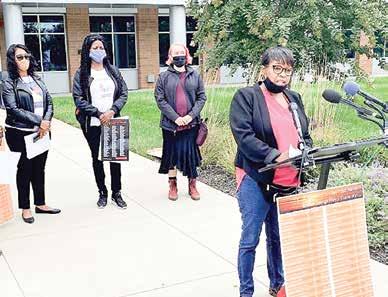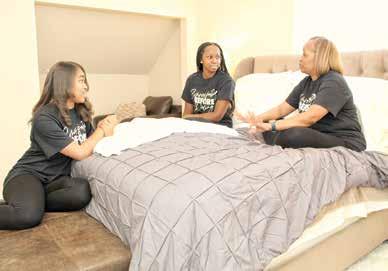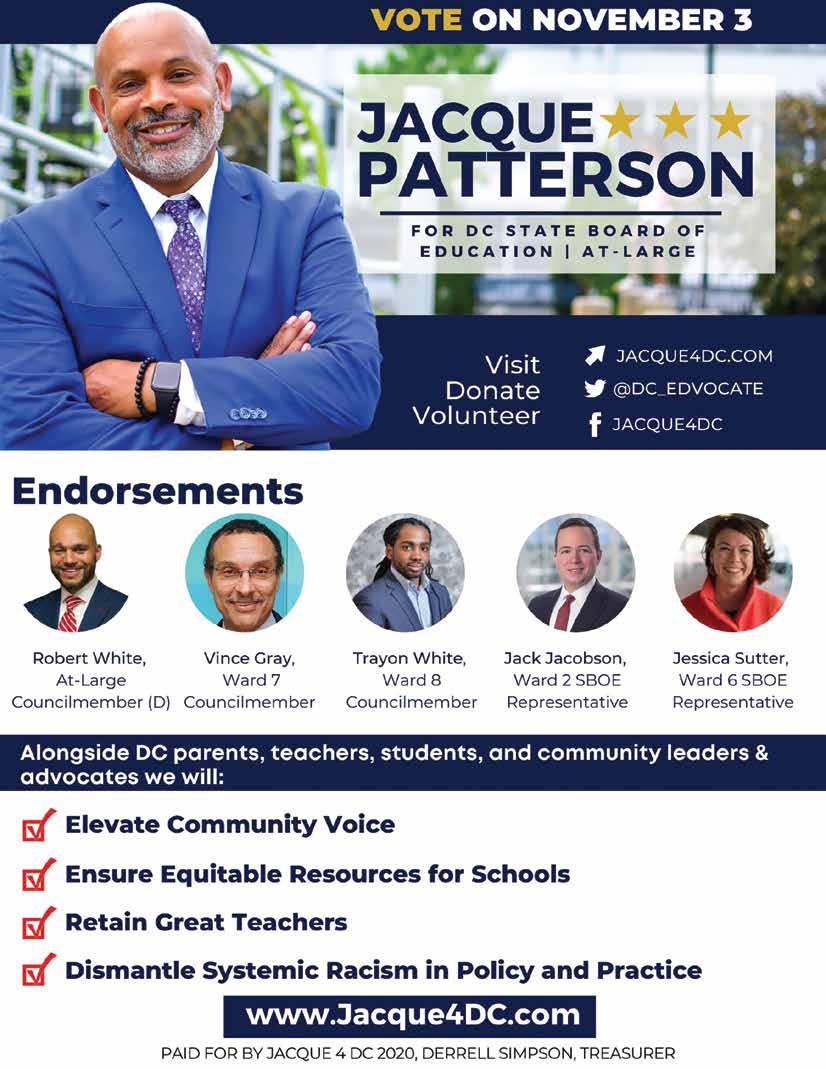
14 minute read
OpEd
NEWSPAPER READING IS A HABIT
DON’T BREAK THE HABIT! Equipoise: Voting for a Return to ‘Normalcy’

By Dr. Shantella Y. Sherman WI Special Editions Editor
READ THE WASHINGTON INFORMER YOUR WAY:
n In Print – feel the ink between your fingers of our Award Winning Print Edition n On the Web – www.washingtoninformer.com updated throughout the day, every day


n On your tablet n On your smartphone n Facebook
n Twitter
n Weekly Email Blast – sign up at www.washingtoninformer.com
202-561-4100 For advertising contact Ron Burke at rburke@washingtoninformer.com
...Informing you everyday in every way
THE WASHINGTON INFORMER NEWSPAPER (ISSN#0741-9414) is published weekly on each Thursday. Periodicals postage paid at Washington, D.C. and additional mailing offices. News and advertising deadline is Monday prior to publication. Announcements must be received two weeks prior to event. Copyright 2016 by The Washington Informer. All rights reserved. POSTMASTER: Send change of addresses to The Washington Informer, 3117 Martin Luther King, Jr. Ave., S.E. Washington, D.C. 20032. No part of this publication may be reproduced without written permission from the publisher. The Informer Newspaper cannot guarantee the return of photographs. Subscription rates are $45 per year, two years $60. Papers will be received not more than a week after publication. Make checks payable to:
THE WASHINGTON INFORMER 3117 Martin Luther King, Jr. Ave., S.E Washington, D.C. 20032 Phone: 202 561-4100 Fax: 202 574-3785 news@washingtoninformer.com www.washingtoninformer.com
In Memoriam Dr. Calvin W. Rolark, Sr. Wilhelmina J. Rolark
PUBLISHER
Denise Rolark Barnes
STAFF
D. Kevin McNeir, Editor Ron Burke, Advertising/ Marketing Director Shevry Lassiter, Photo Editor Lafayette Barnes, IV, Assistant Photo Editor John E. De Freitas, Sports Photo Editor Dorothy Rowley, Online Editor ZebraDesigns.net, Design & Layout Mable Neville, Bookkeeper Dr. Charles Vincent, Social Sightings columnist Tatiana Moten, Social Media Specialist Angie Johnson, Circulation
REPORTERS
Stacy Brown (Senior Writer), Sam P.K. Collins, Timothy Cox, Will Ford (Prince George’s County Writer), Jacqueline Fuller, Hamil Harris, D. Kevin McNeir, Kui Mwai, Lee Ross, Dorothy Rowley, Brenda Siler, Lindiwe Vilakazi, Sarafina Wright, James Wright,
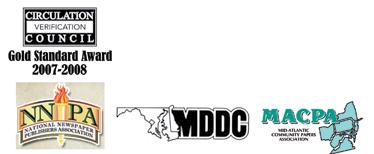
PHOTOGRAPHERS
John E. DeFreitas, Ja’Mon Jackson, Shevry Lassiter, Roy Lewis, Jr., Robert R. Roberts, Anthony Tilghman

When Presidential-nominee Warren Harding addressed the nation in 1920 concerning those issues he believed threatened to destroy the country from within, it was a clarion call encouraging Americans to return to customs. “America’s present need is not heroics, but healing; not nostrums, 5 Dr. Shantella Sherman (Photo by India Kea) but normalcy; not revolution, but restoration; not agitation, but adjustment; not surgery, but serenity; not the dramatic, but the dispassionate; not experiment, but equipoise...” he said. Those concerns – a century ago -- included prohibition, interwar year economic malaise, the ongoing Spanish flu epidemic, and white mob violence in the form of race riots across the country that brought death and destruction to once-peaceful communities.
As Americans head for the polls this election season, 100 years later, many carry similar sentiments and concerns in tow and crave more than anything, a return to something that resembles “normal.” In addition to political divisiveness and a surge in social unrest, the U.S. faces financial uncertainty, an unrelenting health pandemic, and the resulting loss of social mobility.
Harding’s equipoise may be needed, but will voting turn the tide toward healing?
In recent years Americans have overwhelmingly disconnected from the voting process with a mere 126 million votes counted in the 2016 presidential election – representing about 55 percent of voting age citizens. This meant that even as poll watchers celebrated the uptick from 53.5 percent in 1996, only about half of the nation’s eligible voters bothered to participate in the election process.
The concept of “normal” only exists for a nation inside the parameters of each citizen taking seriously their civic duties, particularly, voting and jury service. Ironically, these are the two obligations taken most for granted and unceremoniously set aside regularly in recent history.
Never forget that there was a time when Black people in America were not allowed to serve on juries. African Americans were also not allowed to bring charges against a white person for a crime or testify against a white person in court. Today, a single Black person seated on a jury could be the difference between an indictment or a release – a custodial sentence or a fine – life or death. Do your civic duty and answer the jury summons when it arrives. This is your moral and civil obligation. Exercise your right as a U.S. citizen.
Also, consider that not only are federal and state politicians voted into office, but so too are judges, sheriffs, prosecutors, school boards, and public housing boards. Imagine how many of the disparities in policing, mass incarceration, school funding, and housing equity could be addressed if voters pulled the ballot lever for candidates committed to change.
Don’t like the candidates? Well, welcome to America. Run yourself! Encourage someone who has the grit to get in and do the job to run for office and then support them all the way to victory. This is a democracy and one of the few places on the planet where you can pencil in a name on a ballot. Hell, you can even pencil in your own name!
No more whining, whingeing, or waffling. This is the District of Columbia – where, as you’ll read in James Wright’s story on Home Rule – residents elect a non-voting Delegate to the US House of Representatives who can draft legislation but cannot vote, have no voice in Senate Committees or on the Senate Floor. This means that D.C. residents have no say in the determination of who should serve as leadership for federal agencies, serve as U.S. Ambassadors to foreign countries, sit on federal court benches, or serve in the U.S. Supreme Court. This is true even for the federal courts within DC’s boundaries.
Again, there is no excuse not to vote (or serve on jury duty).
The Washington Informer Election Guide, “Stay Safe & Vote” offers readers an historical framework from which to approach both the voting process and a template for taking hold of our most cherished and patriotic treasures – the right to vote.
Read, Learn, Grow.
Ensuring the College Vote Counts
By Jordan Colquitt WI Contributing Writer
Young people will play a major role in the outcome of the November 3rd Presidential Election. Historically, this has not been the case as college students who account for a large portion of this number have voted at significantly lower rates. While some students did not feel that politics impacted them, others lacked access to voter information, and some were deterred by other factors. However, there was a major shift and increase in election participation seen in the 2018 midterm election.
According to political data analysis firm TargetSmart, there was a 188 percent increase in early voting in the 2018 election from 2014. The upswing in the 2018 midterm election was the result of various factors. Many universities across the country upped their efforts to register students and otherwise increase political involvement. Additional classes and requirements were created with the goal of raising political efficacy and understanding of elections within the college-aged voting bloc.
Relying predominantly on peer-to-peer outreach, Northwestern University registered 95 percent of eligible students in 2018. This shift served as a threat to officials in the Republican party, as data from the Pew Research Center shows that 58 percent of young adults age 18 to 25 either identified as or leaned Democratic. Tools of voter suppression were mighty in the 2018 midterm election, with states like Nevada making residency changes that impacted students in the eleventh hour.
The new wave of increased civic participation among college students will not ease up in this election. And frankly, neither will attempts to suppress this resilient group of voters. Tufts University Institute for Democracy and Higher Education Director, Nancy L. Thomas said that when the Coronavirus outbreak started she “realized immediately that election laws and rules were going to be a mess and there would be lots of efforts to disenfranchise certain groups, including college students.”
Despite whatever attempts may arise to suppress the student vote, school officials and students are determined to ensure that students are equipped with the tools to not only register but also vote in the upcoming election. Vanessa Velas, an 18-year-old freshman who is studying Political Science at Rochester University, realizes the important role that her age group will play in the election.
“It’s important for me to vote because I believe that anyone who has the right to vote should use it,” Velas, of Hyattsville, said. “For those in my age group, it is so much more important because we should be speaking out and voting for the change that we want to see in the future.”
Athletic officials at Georgia Institute of Technology in 9 of the institution’s Division I NCAA athletic programs have agreed to not hold mandatory athletic activities on election day to encourage students and staff to vote.
In like manner, the school’s Student Government Association and Faculty Executive Board passed a motion that “strongly urges” professors to not hold exams or synchronous lectures on election day. Tech officials have also announced that the McAmish Pavilion will be used as a polling location for the presidential election.
Kyle Smith, Executive Vice President of Georgia Tech’s Undergraduate Student Government said that “many of our policies have been set in place before we even had the ability to vote. So now, exercising our right to vote is important to say that this is where the people of our generation stand.”
Smith, a third-year Public Policy student, mentioned police reform, immigration reform, and climate change as some of his many priorities in the election.
No matter what tactics of voter suppression may stand in their way, one thing is clear; their voices will be heard at the ballot box.
For information on how to register to vote, election deadlines, polling places, and more please visit rockthevote.org/how-tovote/.
WI
5 Questions to Ask Local Candidates

The DC Council is made up of 13 members, including an elected representative from each of the eight Wards and five additional at-large members, including the Chairman. David Grosso (I-At Large), is not seeking reelection this year, creating a competitive race for one of the five at-large seats. Councilmembers in Wards 2, 4, 7, and 8 are also running for reelection. Make sure the candidates have a position on the issues below that aligns with your values. During this election, local candidates need to address the issues that matter to you.
1. What are your budget and tax priorities and how will they improve the lives of District residents 50 and older?
2. Do you think the District has done enough to promote affordable housing and access to community services? If not, what more can be done?

3. What are your views on a mandated consumer advocate on utility commissions and boards that approve utility rates?
4. What are your views on the Elder Abuse Response Team bill moving through the DC Council to help protect seniors from all forms of abuse?
5. What will you do to ensure that District resident are protected against fraud and deceptive or unfair business practices, and provide opportunities for redress to victims of fraud?
Stay safe, stay healthy, and make your voice heard! #ProtectVoters50Plus
Amplify Your Voice: Vote as a Bloc
By Dr. Sophia Sparks WI Contributing Writer
According to the US Election Project, approximately 60 percent of the voting eligible population voted in the 2012 and 2016 presidential elections. Historically, the percentage of the voting eligible population declines each election cycle as many Americans feel that
Dr. Sophia Sparks their vote does not matter. Your vote matters. Voting does not determine which party inhabits an office. Your vote dictates which policies are pushed, whose voice the politicians hear, and whose voice the politicians ignore. Low voter turnout during elections leaves the level of political influence to corporate interests and voters who mobilize over issues rather than the popularity of the candidate.
Amplify your voice. Vote as a bloc.
The lion may be king of the jungle, but its true strength comes from the pack. The same is true in politics. There is strength in numbers.
Political nominees target large, organized groups such as unions. Why? Less effort to obtain more votes. Canvassing the neighborhood takes time and may not result in the number of votes necessary to secure a political candidate’s victory. Attending an organizational meeting such as the local union or a homeowner’s association reaches the same number of people in less time and can result in a larger number of secured votes.
Take the city of Alexandria, Virginia for example. The 2019 U.S. Census estimates the city’s population to be 159,428. Only 7,500 of these residents voted in the city’s last election according to the city’s election statistics. An estimated 3,795 active/retired police and fire fighters live within Alexandria, making the political engagement of this labor group rival other labor groups that do not form a union. The police and fire associations’ influence extends beyond the individuals within the association. It touches their network of friends, family, and other related associations which makes their endorsement even harder to turn down.
Union members are more likely to vote and more likely to belong to other associations than non-voters according to the 2013 study “Labor Unions and Political Participation in Comparative Perspective,” by Jasmine Kerrissey and Evan Schofer. Given this information and the multiplier provided by the study, we can assume a minimum 3,900 of the 7,500 Alexandria votes came from a union member or someone they influenced. The group’s voting record combined with the benefits of the
5 Unions, homeowners’ associations, and collective Ward or ANC voting often secure the best candidates to meet the needs of given groups. / Courtesy photo

associations’ ability to mobilize voters makes them an attractive political target and a formidable voting bloc. An endorsement by the police and fire association can secure a mayor, city council member, or state representative a seat in less time than it would take to knock on all 144,000 doors.
Influence the 2020 election with these four actions. One, help register individuals who are eligible to vote within your community. Two, put the November election on the meeting agenda of your next homeowner’s association or social gathering. Three, mobilize voters through conversation and education; and Four, help people in your network get to the polls. ES
A projected 32 million
Hispanics will be eligible to vote in 2020, compared with 30 million blacks. The population of Asians eligible to vote will reach an estimated 11 million in 2020, which is more than double the 5 million who were eligible to vote in 2000, accounting for 5 percent of next year’s electorate.
By the Numbers
Taken together, this strong growth among minority populations means that a third of eligible voters will be nonwhite in 2020, up from about a quarter in 2000. This increase is at least partially linked to immigration and naturalization patterns: One-in-ten eligible voters in the 2020 election will have been born outside the U.S., the highest share since at least 1970. Since the 1960s, turnout rates have hovered between 51 percent and 62 percent in U.S. presidential elections, and between 37 percent and 50 percent in midterm elections.
“I expect 2020 voter turnout to be exceptional, perhaps the highest in over a century, since 1908,” McDonald said. “I sometimes refer to it as ‘the storm of the century.” -- University of Florida political scientist Michael McDonald

In November, for the first time: Americans born after the 9/11 attacks will be voting for a president, Gen Z will surpass the Silent Generation’s share of the electorate; and Hispanic Americans will surpass Black Americans as the largest racial or ethnic minority voting group. Also, this election will see a mere 53 percent of potential first-time voters as non-Hispanic white people — down 11 percentage points from the rest of the voter-aged population, according to U.S. Census projection data. More Hispanic: Nearly a quarter of 18 to 21 year olds in 2020 are projected to be Hispanic, compared to 16 percent of the rest of American adults, according to census data. Finally, first-time voters are more likely to be pursuing college and have parents with college degrees.

